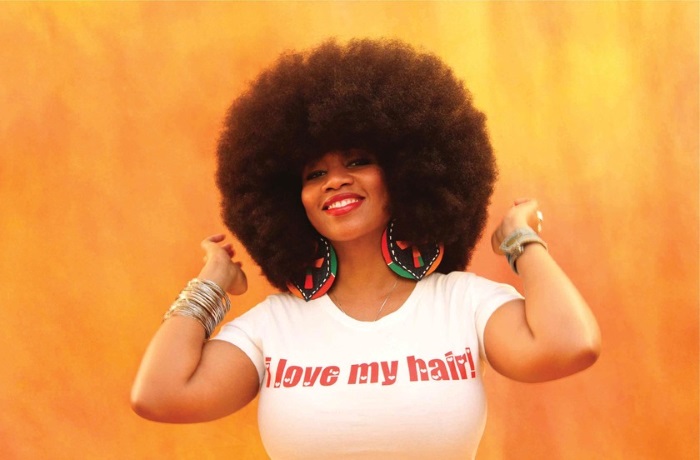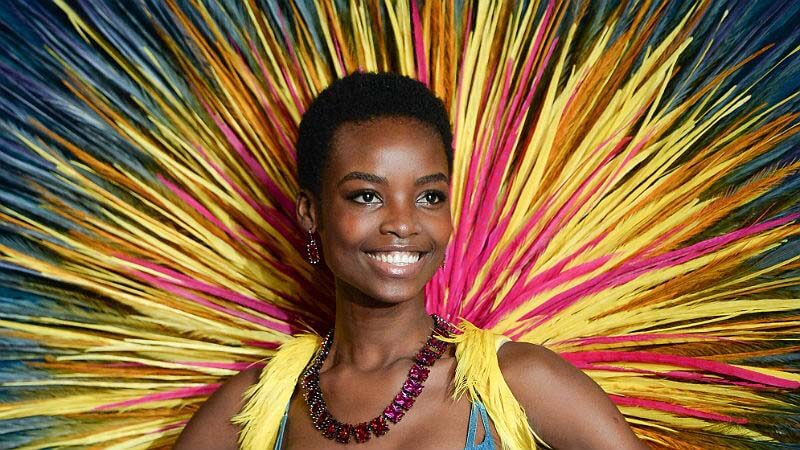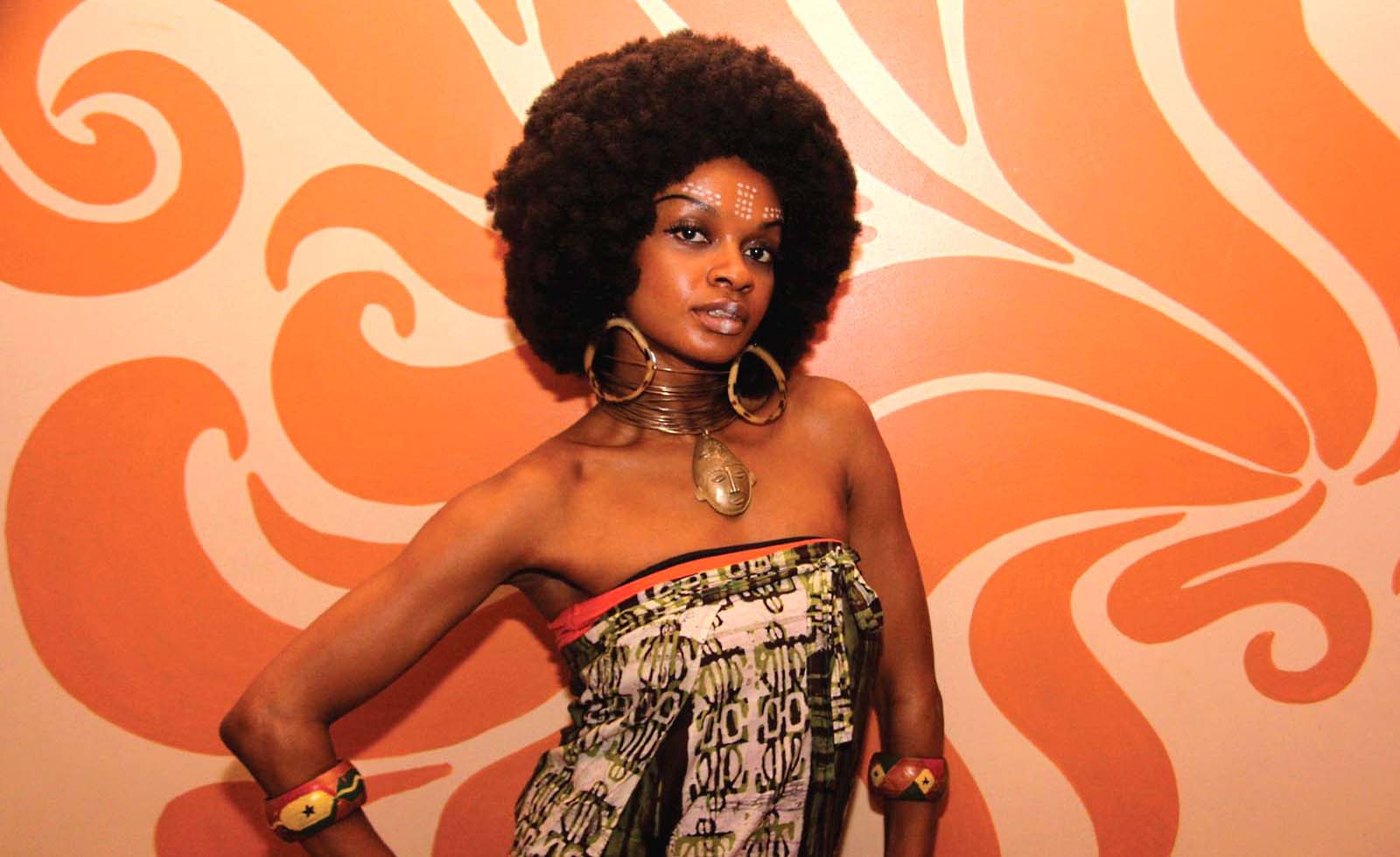Kenya Quarles once said “Just like fine wine, natural hair gets better with time“…
Hair has been a part of the African tradition since precolonial era and is a major part of the people and culture of Africa. Ancient Africans from a large range of cultures spent hours washing, braiding and styling it to ensure it remained healthy and beautiful. Pick combs, cowries and other ornaments were often used to accessorise the hair and accentuate its beauty. These hair practices among others date back to precolonial times where it was seen as a very important feature in defining a person’s personality, marital status, state of wellbeing, social class etc. For instance, in the Wolof tribe of Senegal, a young woman will shave a portion of her hair to tell the bachelors that she is single and ready for marriage. Traditional hair care products like Palm kernel oil, black soap, and argon oil were used to maintain the health of the hair.
Using Andre Walker’s hair classification scheme, hair generally falls within the range of 3am,3b,3c,4a,4b and 4c. This classification is based on definition of curl pattern. Most Africans fall within the 4c type; its curls are less defined and generally, shrinkage is a common occurrence.

Aevin Dugas. The woman with the Worlds Largest Female Afro.
Popularisation of “ The Fro ”
Afro is hair in its natural state combed out of the scalp to form a ball or oval shape.it is popularly referred to as nappy, kinky, wooly or 4c hair. Cherise luter observed that Afro is in no way a new concept, but the newest iteration of the decades old hairstyle taking a firm hold. It is often shortened as ‘fro.
During the slave trade in which there was massive exodus of Africans to Europe, blacks were made to feel inferior because of the color of their skin and the texture of their hair. Wavy, silky or straight hair was termed “good hair” as opposed to nappy, kinky or wooly hair. Africans had little or no time to cater for the hair they once cherished, hence, the hair was often unkept and unhealthy. Also the unavailability of black soap, palm kernel oil and other traditional homemade hair care products in the west made it less easy to cater for their hair
During the 60s, the blacks in Europe made a conscious effort to be proud of their color. This was when the “black is beautiful” campaign began. Being black and natural had negative attachments and such, the blacks needed to feel good about themselves. It was during this time that Afro became a trending hairstyle among black youths who restlessly and tirelessly fought for racial equality and political recognition. They no longer wanted to blend in and indeed they stood out, wearing ‘fros recklessly.

60’s Black is Beautiful Movement
Soon enough, Afro became a political statement when the political activist, Angela Davis went about in the 70’s wearing ‘fro. This was when the Black Power Movement (BPM) gained popularity. Hence, anyone who wore his/her African hair in its natural state was said to be declaring his/her freedom from western civilization/slavery. It was often termed aggressive, however, the BPM wanted to pass across a message which was simply “I am black, proud and beautiful, I am me”.
Effacement of “ The Fro ”
Like many hairstyles, Afro fell out of fashion as quickly as it came. In a struggle to blend with what was generally accepted as “good hair”, the 80’s and 90’s saw the boom of the hair industry. The sale of chemical relaxers, flat irons and hot combs was at its peak as there was a dire need to look European or have straight hair. Jheri curls, weaves and other Europe induced hairstyles wereintroduced and subsequently became more popular.
Is there a resurgence?
The year 2000’s has witnessed a drastic return of many African women to their roots. Hair in its natural,wooly, nappy and kinky state is now a common trend in many African countries. In 2011, overall, chemical relaxer brands noticed an estimated 67% decline from the previous year in Black women purchasing their products.
In 2014, Kenyan lupita Nyongo covered Vogue magazine were she wore her natural hair – often Afro (very short).

This Is What the Afro Means Now | Bustle : www.huffingtonpost.com
Maria Borges, the Forbes Africa magazine top model of 2013 turned heads at the 2015 Victoria secrets fashion show when she showed up with her natural hair…very short Afro. CNN noted that she made hair history by strutting the runway with her teeny-weeny Afro (TWA). The Angolan beauty later said that “if you say you are beautiful without hair and makeup, then they will believe you. It’s about being confident and by always being yourself“.
The model was a Givenchy exclusive two years in a row.

Maria Borges Is the First Afro-Coiffed Model to Walk in the Victoria’s Secret Fashion
Cherise Luter, a fashion blogger noted that there is a huge difference between ‘Fros in the 70’s and now. According to her, while the former was created to awaken racial consciousness, the later preaches self-love. She noted that, “if the new movement had a rallying cry, it would not be I’m black and I’m proud but I’m me and I’m proud”.
In 2011, overall, chemical relaxer brands noticed an estimated 67% decline from the previous year in Black women purchasing their products.
According to the Nielsen black consumer report, African Americans now spend more on haircare products than other life necessities like food and hygiene products. The report went further to state that natural hair care for African American women is one of the biggest growing industries in the world. Thousands of natural hair blogs emerged during the time and as at 2006, the black hair care industry became a billion dollar industry with a lot of focus on Africa.
Controversy
Afro has become a retro look often worn big and bushy or small and well groomed mostly by Africans. This look is often worn by busy people because it’s simple and requires low maintenance and many say it no longer symbolizes political extremism.
Many debate that this is not a political movement as was the case with the Black Power Movement claiming – it has come to be known as a desire to return and be truly African in all ways. Some called it “Afrocentrism“. Others argue that for Black Women, wearing an Afro Is Always Political.
In August 2015, Allure came under fire for teaching & encouraging white women on how to get an Afro. A tutorial published in its August issue titled, “You (Yes, You) Can Have An Afro.*” The asterisk reads: “even if you have straight hair.” The presumption was that it was aimed toward white women which apparently caused the uproar.
Afro which was traditionally seen as a lazy style for people who worked too much or cared too little about their hair seems to be back and slowly creating a trend.
“The Fro” may be back and is seen in a range of people – sexes, races and strata. From stars like, Erykah Badu, Omoni Oboli, Lenny Kravitz & Redfoo wearing their natural hair on stage and the red carpet to the many people (black, white, brown, male, female) across the planet who now wear Fros’.
[Header image]– Zelocare

